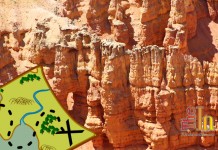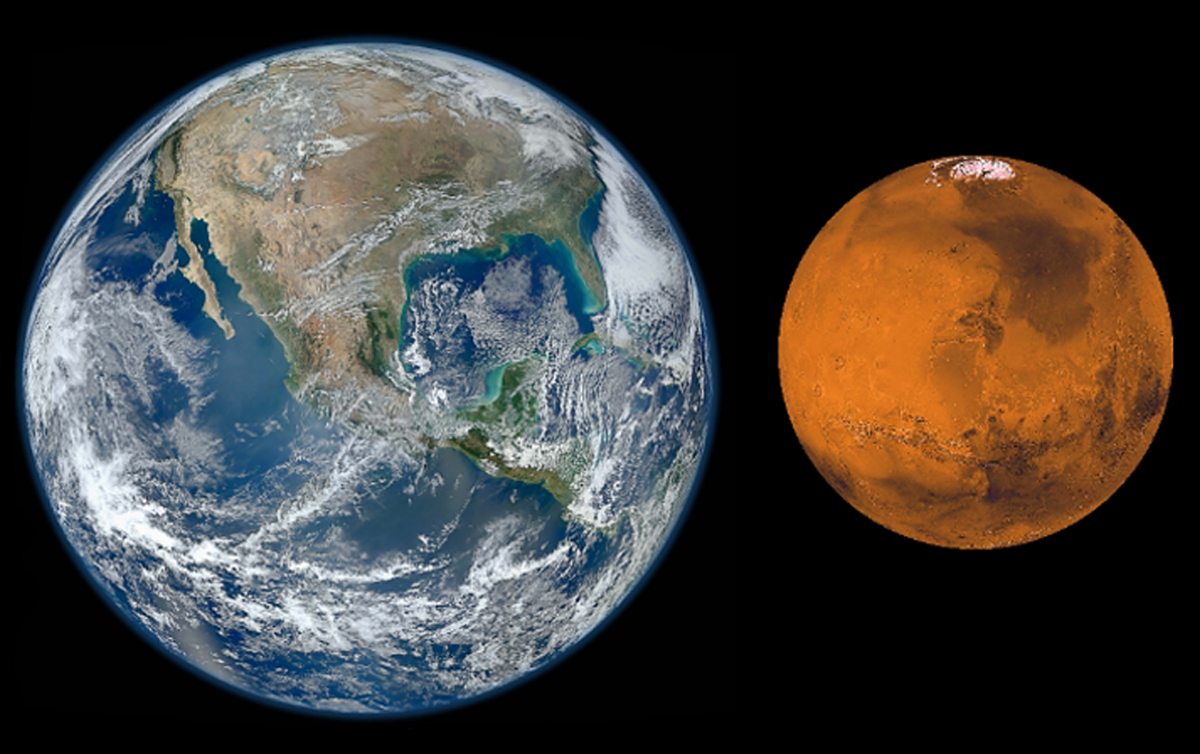
Life on Earth and Mars: Where have we been and where are we going
Evidence provided by NASA from various flybys, landers, and rovers of Mars, beginning in 1965 with Mariner 4 images, have provided provocative information about the conditions that existed on that planet in the ancient past. Various recognized geologic surface features indicate close similarities with features existing currently on Earth. It is evident that early in its history, Mars had conditions very similar to those existing on Earth. The purpose of this third installment is to present some of this evidence.
Ancient Martian conditions resemble those on Earth
Earth and Mars exist within the habitable zone of our Solar System, and these two planets had much in common early in their respective histories. What we see on Mars today, however, is a planetary time capsule. Many distinctive geologic features on the surface represent preserved remains of features that existed over 2 billion years ago, and these indicate that ancient Mars may have been very “Earth-like.”
The Solar System formed about 4.55 billion years ago. Significant events following this formation produced two different groups of planets. Four inner planets are termed “terrestrial,” and the outer planets are termed “Jovian” (see Part 1, figure 4). Terrestrial planets are relatively smaller and have a rocky composition and a higher density. Jovian planets are larger, consist mainly of gases and liquids, and have a lower density. Earth and Mars are both terrestrial planets and have similarities in composition but differ in other respects (Figure 1).
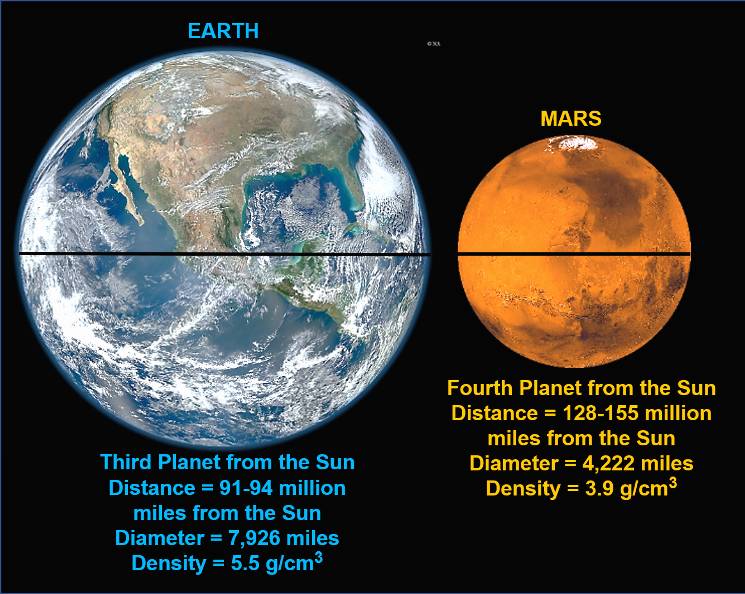
A most obvious first comparison is the size difference between these two terrestrial planets. Mars is only a little over 50 percent of the size of Earth. It has less mass and therefore a weaker gravitational pull. It presumably had fewer radioactive isotopes because of its smaller mass. Additionally, Mars is significantly farther from the Sun and receives less solar energy.
A second comparison is provided by the evidence of volcanoes on both Earth and Mars (Figure 2). Unlike Earth, eruption events seem to no longer occur on Mars, possibly because there are no longer enough remaining radioactive isotopes to generate sufficient internal heat. However, evidence collected by NASA indicates that volcanic eruptions were more common early in its history and that they produced an atmosphere and a hydrosphere. Because both planets are of similar compositions, it is likely that the early Martian atmosphere and hydrosphere were similar in composition to those present on an early Earth.
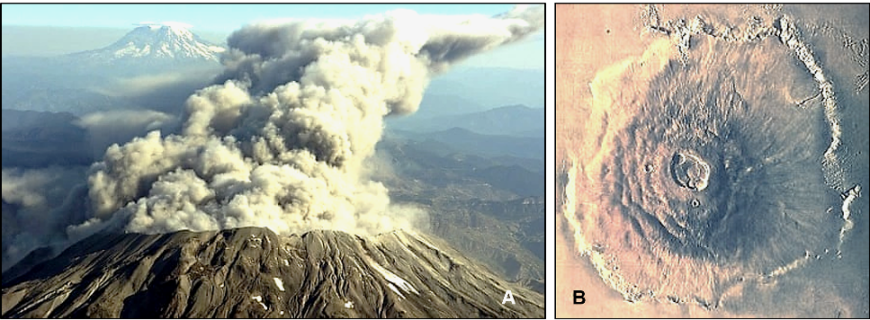
On Earth, volcanism has been occurring for over four billion years, pretty much since the planet solidified although at a decreasing rate up to the present time. On Mars, volcanism was also common early in its history but has decreased significantly, especially within the last two billion years of the planet’s history.
A third comparison is to determine if there is evidence remaining on Mars to indicate if water and atmospheric gases were present or are still present. In contrast to the few remaining craters on the surface of Earth, the presence of numerous impact craters on the surface of Mars is an indication that at least for a considerable length of time (Figure 3), there has not been much weathering and erosion at the surface to remove or bury them. This implies that a significant atmosphere and running water have not existed for a long time on Mars.
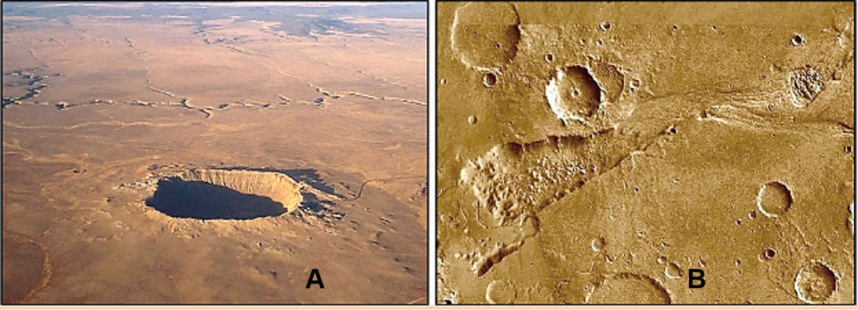
Comparison of preserved features on Mars with those on Earth
Recent photos taken by NASA and the European Space Agency have shown a polar ice cap and what appears to be surface ice within some of the northern hemisphere craters (Figure 4). This ice may be frozen water or frozen carbon dioxide. Other recently discovered evidence indicates that a significant amount of subsurface water (groundwater) exists on Mars.
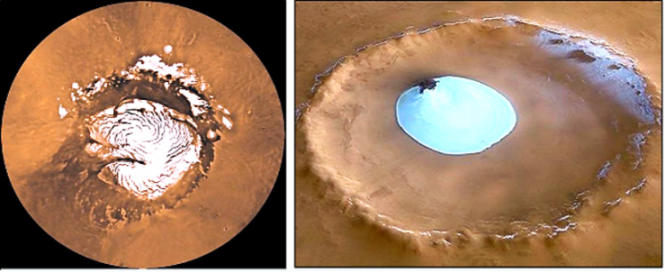
Aerial and ground photos of the Martian surface have revealed a variety of geologic features providing compelling evidence that conditions on Mars early in its history are in stark contrast to what exists today. Furthermore, many of these ancient preserved features can be directly compared with similar features currently existing on Earth (Figures 5-11).

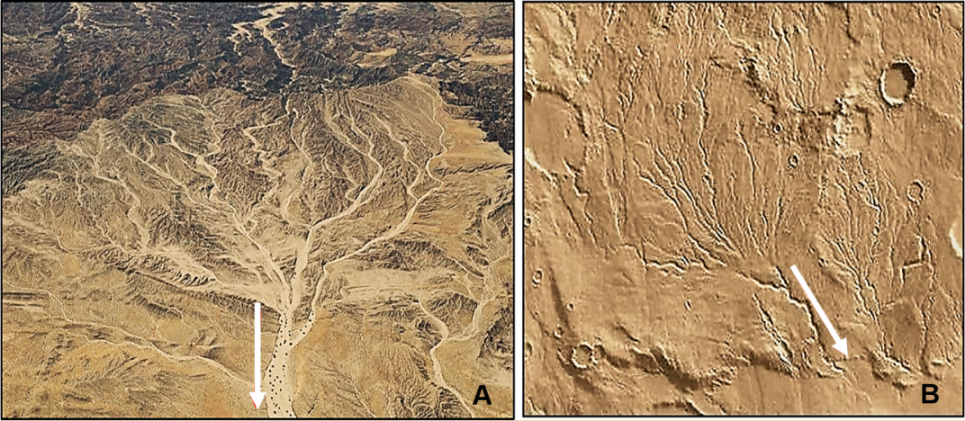
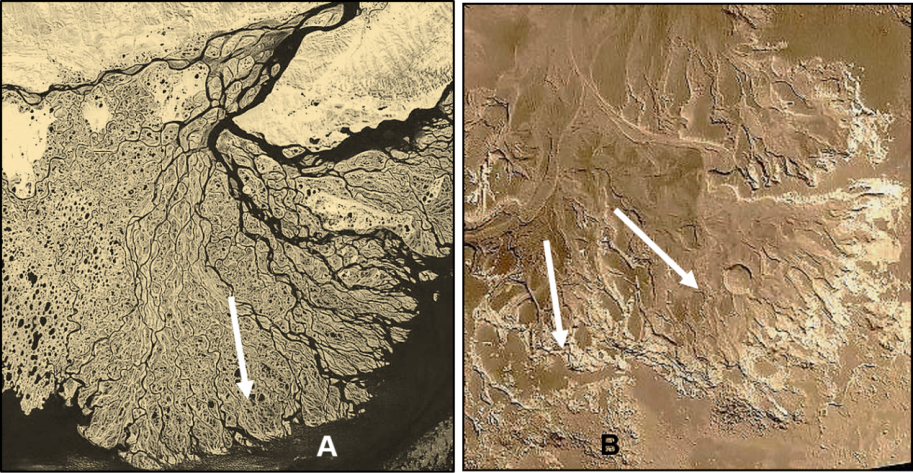
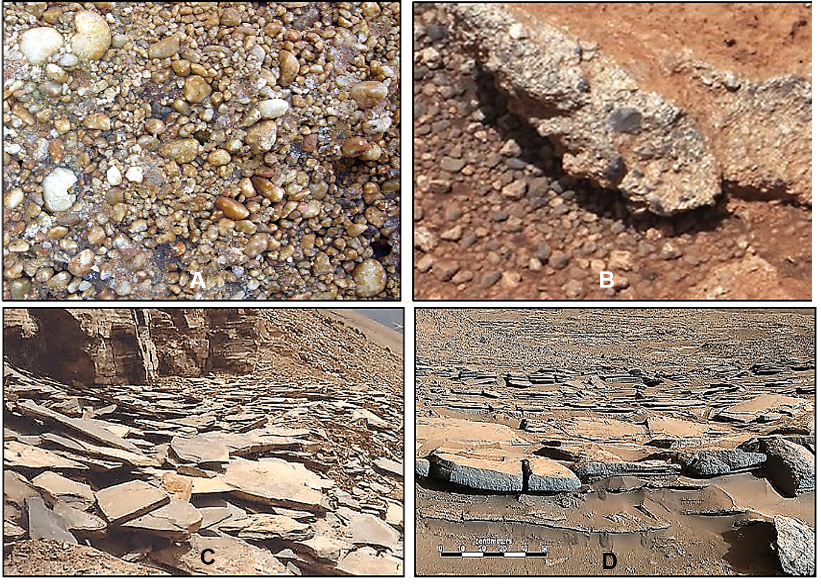
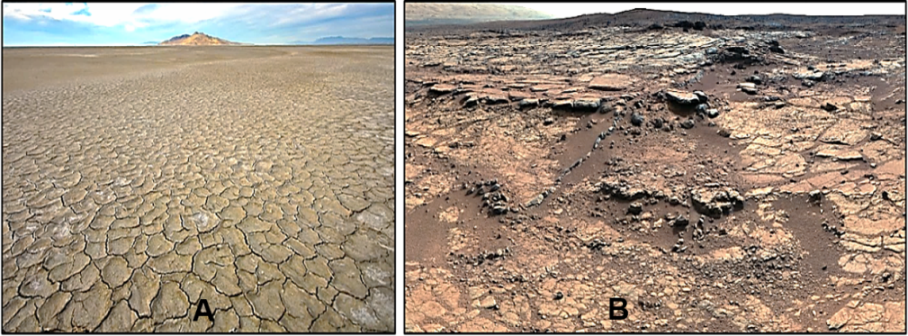

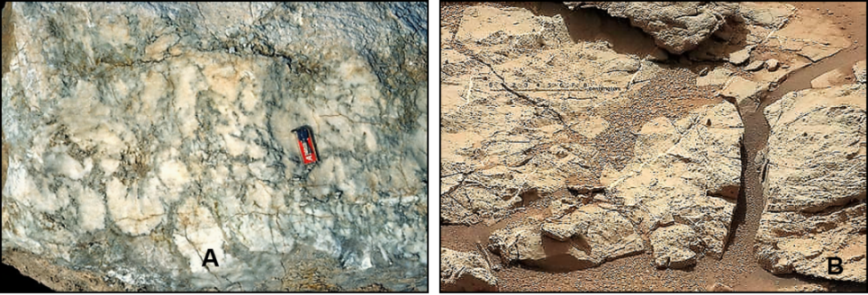
Summary of this evidence
As illustrated by the images above, preserved evidence on Mars demonstrates that various surface processes such as volcanic eruptions, weathering, erosion, and deposition of sediments by wind, water, and perhaps ice were occurring in the ancient past. They are not occurring at the present time. This is analogous to processes that occurred on the primitive Earth and which represent cycles such as the rock cycle and hydrologic cycle. However, on Earth these cycles have continued to the present time.
Much of the above evidence comes from features within and around the Gale Crater, which is located about 5 degrees south of the Martian Equator. This crater is considered to have formed between 3.5–3.8 billion years ago and is about 96 miles in diameter.
Evidence provided by NASA indicates that volcanic activity on Mars generated an atmosphere and a hydrosphere early in the planet’s history. This also suggests that interior heat energy was generated by radioactive decay (nuclear fission) as occurs within the Earth.
However, this evidence also indicates that volcanism decreased, especially by about 2 billion years ago on Mars. This suggests Mars likely “ran out” of sufficient interior heat from radioactive decay and this greatly reduced any volcanic activity. With a lack of continued outgassing, combined with the lower gravitational pull of a smaller mass planet, atmospheric gasses and hydrosphere mostly escaped into space, the planet surface cooled and remaining water froze. Thus, the various cycles no longer were operating, and Mars essentially “died” (Figure 12).
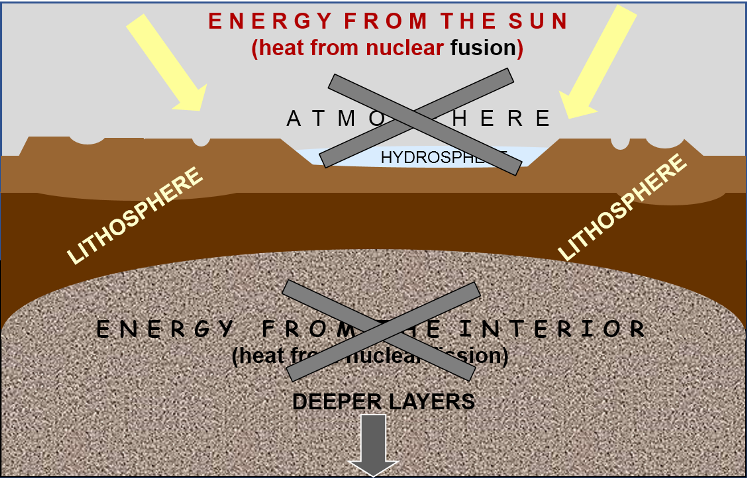
Summary of Martian history
A brief summary of the geologic history of Mars is illustrated by the following diagram (Figure 13). It is likely that further explorations of the planet will provide more details and this summary will certainly be revised in the future.
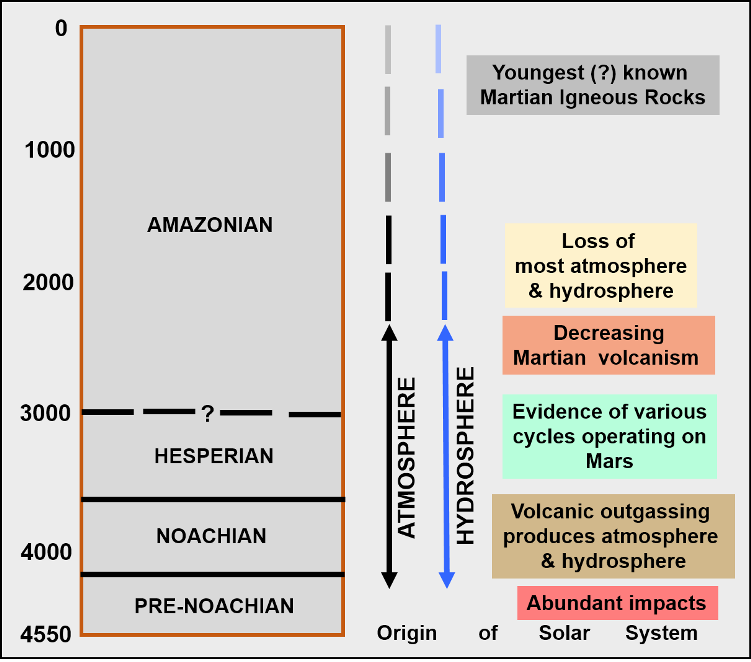
Currently recognized geologic evidence of Martian history indicates that early in its history, Mars was operating much like Earth. Among other things yet to be discovered is whether life also developed on Mars and if it still exists. Currently, there is some evidence to support that idea, and this will be discussed in the next article in this series.


